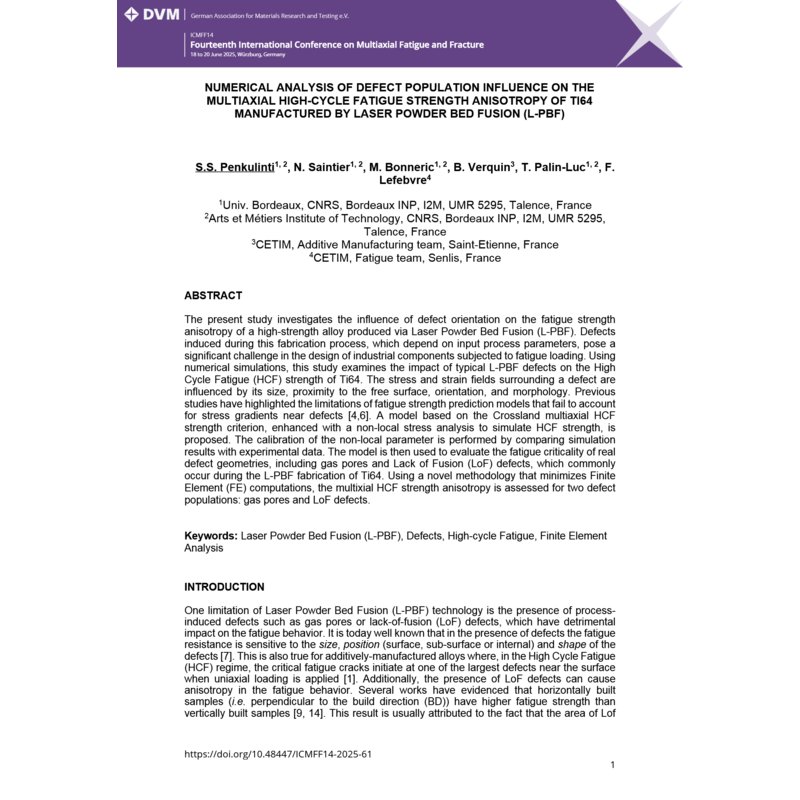- Online only



The present study investigates the influence of defect orientation on the fatigue strength anisotropy of a high-strength alloy produced via Laser Powder Bed Fusion (L-PBF). Defects induced during this fabrication process, which depend on input process parameters, pose a significant challenge in the design of industrial components subjected to fatigue loading. Using numerical simulations, this study examines the impact of typical L-PBF defects on the High Cycle Fatigue (HCF) strength of Ti64. The stress and strain fields surrounding a defect are influenced by its size, proximity to the free surface, orientation, and morphology. Previous studies have highlighted the limitations of fatigue strength prediction models that fail to account for stress gradients near defects [1,2,3]. A model…

Datenschutzbedingungen (bearbeiten im Modul "Kundenvorteile")

Lieferbedingungen (bearbeiten im Modul "Kundenvorteile")

Rücksendebedingungen (bearbeiten im Modul "Kundenvorteile")
The present study investigates the influence of defect orientation on the fatigue strength anisotropy of a high-strength alloy produced via Laser Powder Bed Fusion (L-PBF). Defects induced during this fabrication process, which depend on input process parameters, pose a significant challenge in the design of industrial components subjected to fatigue loading. Using numerical simulations, this study examines the impact of typical L-PBF defects on the High Cycle Fatigue (HCF) strength of Ti64. The stress and strain fields surrounding a defect are influenced by its size, proximity to the free surface, orientation, and morphology. Previous studies have highlighted the limitations of fatigue strength prediction models that fail to account for stress gradients near defects [1,2,3]. A model based on the Crossland multiaxial HCF strength criterion, enhanced with a non-local stress analysis to simulate HCF strength, is proposed. The calibration of the non-local parameter is performed by comparing simulation results with experimental data. The model is then used to evaluate the fatigue criticality of real defect geometries, including gas pores and Lack of Fusion (LoF) defects, which commonly occur during the L-PBF fabrication of Ti64. Using a novel methodology that minimizes Finite Element (FE) computations, the multixial HCF strength anisotropy is assessed for two defect populations: gas pores and LoF defects.